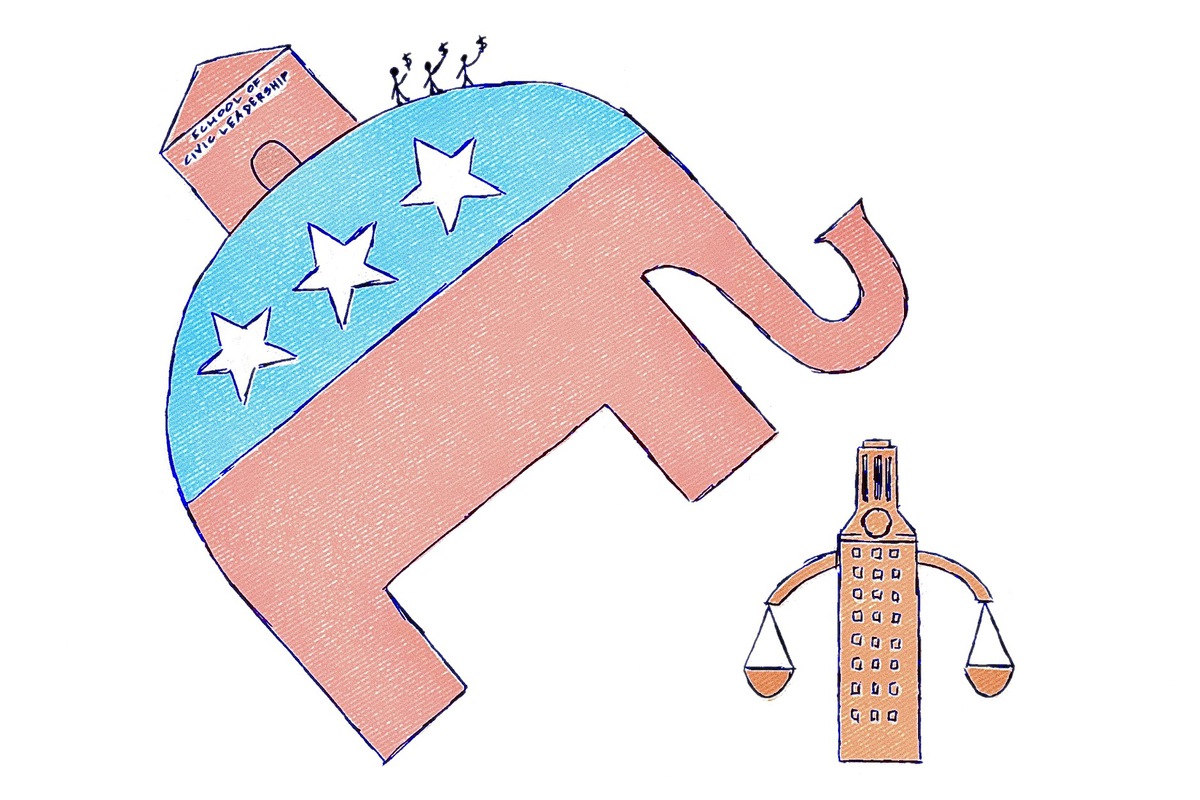Everything in my closet is secondhand.
I have gotten everything, from sweaters to shoes, at secondhand stores such as Goodwill and Plato’s Closet — or from pieces my sisters have outgrown. Clothing with the single flaw of not being brand new.
I don’t buy secondhand because I’m really cheap. I do it because of fast fashion.
Fast fashion is a term used to label the speed-to-market model that retailers such as H&M, Zara and Forever 21 have perfected. The objective is simple: Reduce the time it takes for styles to reach retail stores in order to squeeze out the largest profit margin. H&M can go from design phase to the cultivation of raw materials, to production, to retail stores in as little as two weeks flat. Young consumers, especially students, are constantly bombarded with cheap, trendy, low quality pieces that, once purchased, are often only worn a few times.
A consequence of the constant influx of poor quality and disposable clothing is out of the 16 million tons of textiles produced in the United States in 2015, 10.5 million tons ended up in the landfill. The fast fashion industry is severely unsustainable from its intensive chemical, energy, land and water production to its ultimate resting ground in landfills.
The only solution to a problem created by overproduction is to stop overconsumption. By finding ways to reuse clothing, donating the clothes that aren’t wanted and, most importantly, buying secondhand, students can stop their significant contribution to the proliferation of fast fashion, all while saving money.
“Fast fashion is the sexy bit of fashion. It’s the Instagram. It’s the street trend, and I know because I worked in fashion forecasting,” said Peggy Blum, textiles and apparel lecturer and a sustainable-fashion consultant. “I’m guilty of pushing trends on manufacturers and consumers.”
In modern day fast fashion, trends change almost as quickly as the styles are produced. Clothing is bought, stashed away in closets, and the next fad is sought out, especially if it only costs $11.50 at H&M.
A byproduct of making clothing so cheap is that the quality of the garments is equally as cheap. “The materials most commonly used to manufacture these clothes are rayon, nylon, acrylic and polyester,” said Jonathan Chen, a renewable fiber and composite professor. Although these synthetic materials pollute the atmosphere and waterways significantly, they are used because they are dirt cheap.
Some fast fashion retailers, such as H&M, have recycling programs that present a front of sustainability, but the percentage of clothing that is actually recycled into new fibers is small. Blum said H&M’s sustainability collection and recycling program is in place just to make consumers feel good while not having to make any changes to their production model.
The current technology we have to recycle textiles cannot actually separate blended fibers such as cotton and polyester, which is a common mixture in fast fashion. Even if the technology were there to properly recycle, with their current production rate, it would take H&M 12 years to recycle what they produce in 48 hours.
The only way to slow down the fast pace of the fast fashion industry is for consumers to stop buying in to fashion trends from retailers that place profit over people and the environment. In Austin, we have numerous opportunities to buy from quality local secondhand stores such as Buffalo Exchange on the Drag, GW Boutique on Lamar and Treasure City Thrift on E. 7th Street — we should take advantage of them.
In order to hold businesses accountable for their production, there needs to be a restructuring of our consumption habits and how we view clothing. We don’t have to buy new clothing every time there is a sale — they are making more money than we are saving anyway — or get rid of our old clothes just so we can buy new ones. By buying used clothing for long term use, we are preventing more waste from entering the landfill.
When making buying decisions, we need to vote for what is right with our dollars.
Badillo is a sociology and psychology junior from Guanajuato, Mexico.





















